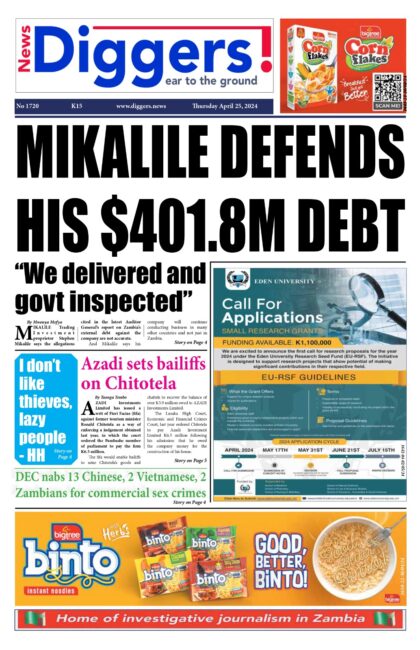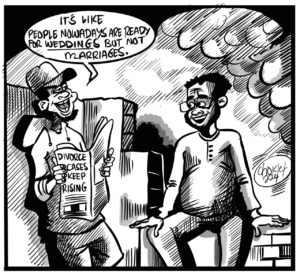The kwacha has depreciated against the South African rand to breach the K0.90 per rand for the first time since November, 2015.
And financial market analyst Mambo Hamaundu says the kwacha’s depreciation against the rand will lead to further increases in the cost of goods and services in Zambia, given that South Africa is the largest trading partner in the SADC region.
Market data reveals that the rand has rapidly gained strength against the local unit having breached the K0.90 per rand mark for the first time in over three years.
Since Zambia rebased the local currency on January 1, 2013, the kwacha had consistently maintained its artificial superior value to the South African rand, trading range-bound between K0.58 and K0.80 per rand.
But updated market data shows that the SA rand has gained value, rallying against other emerging market currencies, including the kwacha.
In January alone, the South African currency strengthened 7.4 per cent against the dollar, spurred by a more conciliatory US Federal Reserve, who maintained the same interest rate level at 2.5 per cent.
The Federal Reserve, the US central bank, held the target range for the federal funds rate at 2.25-2.5 per cent during its first policy meeting of 2019 on January 30.
According to local financial market players, the kwacha significantly depreciated against the rand to hit K0.90 per rand by the end of the first week of this month.
“The rand has officially crossed ZAR/ZMW0.90. With the rand strongly influenced by global sentiment, the comeback for ZAR/ZMW is far-sighted. The rand continues to rally against the kwacha. If these levels persist, the impact will definitely be felt by consumers in due course,” FNB stated in its daily treasury newsletter.
And Hamaundu explained that the kwacha’s depreciation against the rand will lead to further increases in the cost of goods and services in Zambia given that South Africa is the largest trading partner in the SADC region.
“I foresee a price increment, though it might not be very significant in nominal value. They (retailers) import to sell and make a profit; they will not just import to come and give goods and services to a consumer, they will definitely want to make a profit. If their cost of importing has been going up where the (ZAR-ZMW) rate is near K0.90, it could actually result in an increment in the price of goods and services,” Hamaundu explained.
He also predicted that given the favourable global economic sentiment, which work in favour of strengthening the rand, the kwacha could even hit the unprecedented psychological barrier of K1 per rand.
“We have seen the rand move from K0.65 (per K1) going into the K0.70, into the K0.80 and now into the K0.90…I don’t think it’s a far-fetched idea that it could actually go as strong as K1:1(rand) because when you look at what is obtaining in South Africa and Zambia comparatively, it will be safe to assume that the South African economy is much stronger and bigger, and has production backing their currency, whereas our currency is not really backed by good production,” said Hamaundu.












